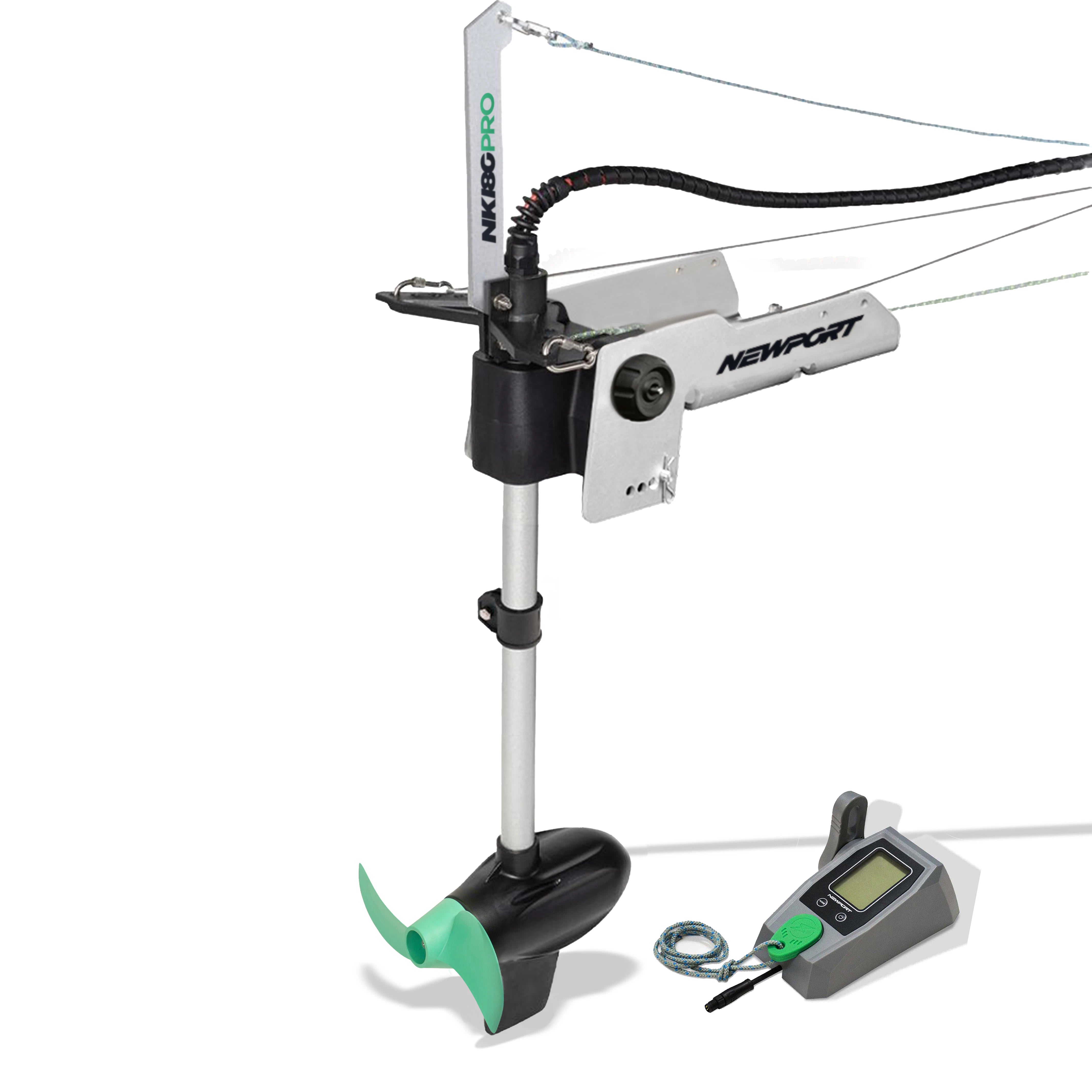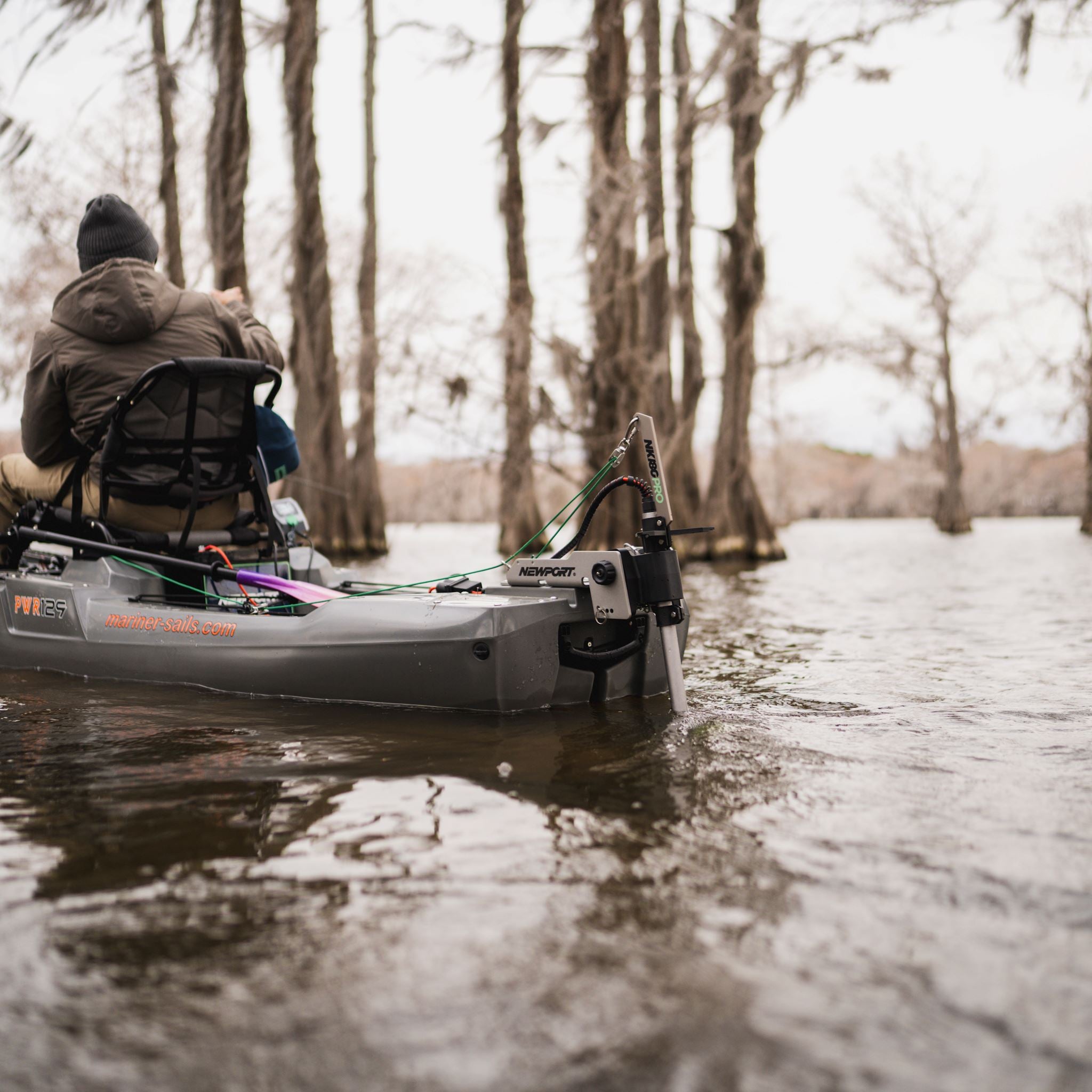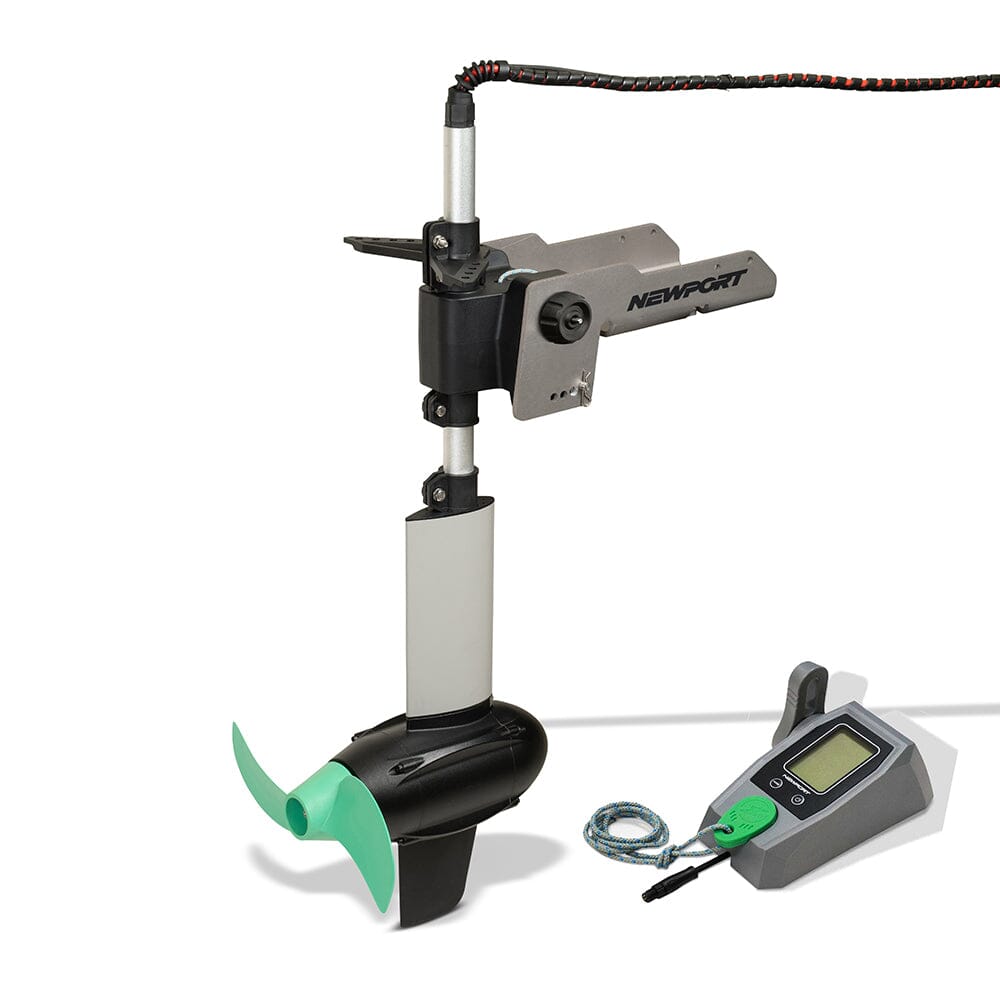Freedom On The Water with Newport, Episode 2
In this episode of Freedom On the Water with Newport, Howie shares technical tips for using Newport electric motors to approach freshwater lakes for largemouth bass. Howie covers using a spinner bait as a search tool, and talks specifics on throttle settings for achieving an ideal speed when fishing a bank.
Highlighted products on this week's episode:
Newport NK180 kayak outboard motor
Newport 24V 50Ah Lithium Battery
Quick Disconnect
How to use a Newport electric kayak outboard motor to your advantage when power fishing for freshwater bass.
Summer time is often synonymous with slower fishing presentations at greater depths. It’s true, most fish retreat to deeper, cooler water. But, if slowing down isn’t your cup of tea, try locating fish that are cooling off in the shade provided by thick cover such as sunken trees, lily pads and grass mats. You can put up some good numbers, even on the hottest days of the year, by targeting thick cover and using an electric motor to move along a bank at just the right pace.
First Light Topwater Bite
Early in the morning, in the summer months, bass are often cruising a shoreline or shallow flat in search of food before the surface temperature climbs with the rising sun. In my experience, this bite window lasts about an hour before shutting down completely. This can be an excellent opportunity to throw a buzz bait or walking bait tight wooded cover or over sparse grass on a shallow flat.
My motor plays into this scenario the same way it does when I’m power fishing thicker, deeper cover. At between 5-10% throttle, an NK180 or NK300 pushes most kayaks along the bank at such a rate that allows you to cast and retrieve around different targets until you hook a fish. Most often, you’ll pull one or two sizable fish off of one feature in the bank or one piece of cover. It benefits you this time of year to keep motoring.
Change Your Approach as Temperatures Climb
Air and water temperatures rise quickly throughout the morning in the summer months. As you notice the first light bite slowing down, start to think about your next move. For me, this means transitioning to a sinking bait that I can work the water column with. I like to target thick, deep cover with this bait. There’s a variety of techniques that work for me when targeting such cover, but my top two picks are: 1.) a bladed bait, i.e. spinner bait or chatter bait and 2.) a punch rig with a creature bait.
Spinner Bait Technique
One of the most important variables in how I use the spinner bait involves how I use my Newport electric kayak outboard with it. In the same way I use the motor when searching with a buzzbait, I set my throttle somewhere between 5-10% so I can efficiently cast to pockets or lanes within thick cover. This allows me to fish a lot of water, but moves me along slowly enough so I can sink the bait out if I need to, and I don’t end up right on top of my lure. You’ll find that constantly moving can be quite productive, and the quality of fish using this method tends to be of that larger size class. The idea here is to pull the alpha fish off of each little spot they’re calling home.
Punch Technique
You’ll want to slow down when you’re punching, but just how slow depends on the depth of water you’re fishing. The shallower the water, the faster you can move. The deeper the water, the slower you’ll want to move. Find that sweet spot with your motor, or shut it down all the way and just hang in one spot for a minute. You’ll want to cast to little pockets in the cover, or even right into the thickest part of the cover with a 1 oz bullet weight ahead of your creature bait, let it sink out and slowly hop it and shake it through the cover. This technique is known to produce some absolute tanker bass.
For More tips and tricks on using your Newport electric motor to target largemouth bass, and for spinnerbait fishing around thick cover, check out On the Water with Newport, Episode 2.
The way forward is electric!













